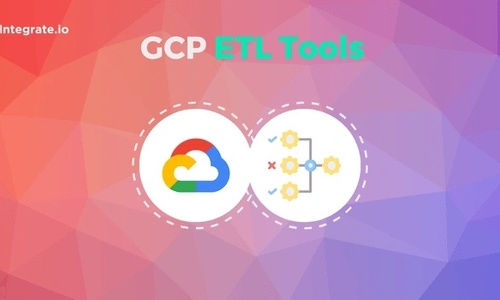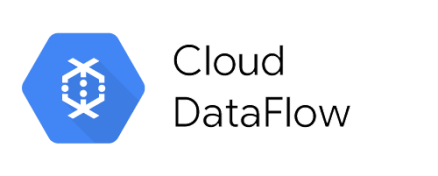Google Cloud Platform (GCP) is a large, cloud-based suite that includes tools for computing, storing data, networking, analyzing big data, networking, managing APIs, and exploring artificial intelligence. The suite includes at least three GCP ETL tools (Cloud Data, Fusion, Dataflow, and Dataproc). However, some users might find that they benefit from a third-party, no-code/low-code ETL platform.
Five essential takeaways from this article include:
- The best ETL solutions don’t require experienced coders or data scientists to work well.
- GCP offers a diverse ecosystem of SaaS and PaaS solutions that can add to your data collection and analytics processes.
- GCP includes ETL tools that can help you extract, transform, and load data from more than 100 popular sources.
- Some of the best practices for using GCP ETL tools are straightforward, while others require careful consideration.
- You might want to use a third-party ETL platform to work with solutions outside of Google’s ecosystem.
In this article, we'll explore GCP's ETL Tools as well as a third-party alternative for your data needs. We’ll also review best practices for using GCP ETL tools, as well as important considerations to keep in mind when selecting a third-party platform.
What Is ETL?
ETL is an acronym for Extract, Transform, and Load. It refers to a process for extracting data from multiple sources, transforming it into a usable format, and loading it into a target system or database. The ETL process takes three steps to move data from the source to a supported destination.
Extract
ETL pipelines start by connecting to data sources and pulling information from those sources. For example, an ecommerce company might want to retrieve data from all of its online sales platforms, customer relationship management (CRM) solutions, and enterprise resource planning (ERP) systems. This could involve pulling data from relational and non-relational databases that contain a variety of data types, such as JSON and CSV files.
The data extraction process can occur in batches or in real time. Real-time ETL – also called streaming ETL – constantly retrieves data from sources so organizations can respond quickly to emerging trends.
Batch data processing retrieves information at a scheduled time. For instance, a company might choose to collect large amounts of data during hours when the network doesn’t need to perform other tasks.
Many ETL platforms also support on-demand data processing. On-demand ETL lets you collect and load data at any time. The amount of time it takes to complete the ETL process will depend on the amount of data collected, quality of data, and efficiency of the ETL tool.
Integrate.io has a library with hundreds of connectors. The no-code/low-code SaaS platform has connectors for popular sources and destinations like Snowflake, Salesforce, Amazon Redshift, Shopify, HubSpot, making it easier than ever for everyone – including marketing, sales, and data science professionals – to move data quickly.
Transform
Since the ETL process can involve multiple data sources, you will likely encounter different data types. The data transformation process reformats and cleans data into a common format, making it easier to analyze.
For example, data pipelines connected to multiple sources might find that those sources contain duplicate information. An ETL tool can clean the data by removing duplications.
Other examples of data transformation include:
- Turning Microsoft Word files into PDFs.
- Combining structured data tables without creating duplicates, repeating errors, or allowing corrupted files.
- Reformatting unstructured data – such as customer reviews – into a structured format – such as numerical customer review scores.
No-code and low-code ETL solutions make it easy for people without technical backgrounds to perform these actions. Instead of learning how to use Python or SQL to program data pipelines, they can rely on drag-and-drop connectors that do most of the work for them.
Load
Once the source data has been cleaned and put into a standard format, ETL tools load the datasets into destinations such as databases, data lakes, and data warehouses.
GCP clients will likely want to load data to destinations within the Google ecosystem. These destinations include:
You aren’t restricted to destinations in the Google ecosystem, though. Some use cases might require loading data to other destinations, such as Apache Derby, Microsoft Azure, Oracle Database, or AWS RDS.
What Is GCP (Google Cloud Platform)?
GCP is a suite of SaaS and PaaS (platform as a service) solutions available from Google.
GCP Pricing
Google lets you use more than 20 of its online products for free as long as you stay under monthly usage limits. Small businesses and professionals learning more about data science might find the free tier attractive.
Once you start collecting large amounts of data needed for machine learning and analyzing consumer trends, though, you will want to move on to a paid version. For example, if you want to use more than 1 TB of BigQuery querying in a month, you’ll exceed the free tier’s limit. That might sound like a lot of data, but it’s easy to reach that amount once you start collecting all of the data you need to keep up with competitors.
Unfortunately, it’s difficult to know how much it costs to use Google Cloud Platform services. The Google Cloud Pricing Calculator can help you estimate costs, but it assumes you know a lot about your use cases. It’s also confusing because pricing for some services can change depending on your location. It’s not immediately clear how location affects businesses that operate across borders or use off-premises tools.
The good news is that Google only charges you for the instances you use. You don’t have to sign up for a plan that exceeds your needs. You only pay for what you use, which should help keep costs down. Still, you might struggle to plan for costs as your technology evolves.
GCP ETL Tools
GCP currently includes three data integration tools.
Cloud Data Fusion
Cloud Data Fusion that supports ETL and ELT pipeline deployment.
Google Data Fusion has several features that make it an effective GCP ETL tool. It has:
- An open-source core that makes it easily portable, so you can use it to connect with data sources and destinations outside of the Google ecosystem.
- A library that includes more than 150 connectors, including connectors preconfigured to work with Salesforce, Oracle, SAP ODP, and SQL Server.
- Native integrations with Google Cloud tools.
- A point-and-click user interface that eliminates most coding.
Dataflow
Dataflow is a managed service that executes Apache Beam data pipelines within GCP. Apache Beam is most useful for batch processing. It can automatically partition various sources and data types, scale to handle all workloads, and follow flexible schedules to keep pricing as low as possible.
Although not technically a GCP ETL tool because it doesn’t transform data, Dataflow can play an essential role in collecting data from sources and moving them to your preferred destination.
Dataproc
Dataproc works in coordination with GCP ETL tools to manage data via a broad range of tools and frameworks, including Apache Airflow and Spark. If you want to run open-source data analytics without running into scaling problems, Dataproc can help. It also takes a low-cost, serverless approach to managing Google Compute and Kubernetes clusters. Google claims Dataproc can lower the total cost of ownership by up to 54% compared to on-premises solutions.
Best Practices for Using GCP ETL Tools
If you decide to use GCP ETL tools, you should make sure you follow best practices that help ensure quality data. Essential best practices for GPC ETL tools include:
- Relying on built-in integrations when possible – they’re already preconfigured to work with popular data sources and destinations.
- Staying within the GCP ecosystem unless necessary.
- Reusing Dataproc clusters to improve workflow efficiency.
- Enabling Cloud Data Fusion autoscaling to prevent bottlenecks.
Some best practices require a closer look at how you plan to use GCP ETL tools. For example, it usually makes sense to let Cloud Data Fusion delete clusters when you finish using a pipeline. However, there are times when you should run pipelines against existing clusters. This approach would make sense when users need to follow strict policies enforced by a central authority or when it simply takes a prohibitive amount of time to make new clusters for all pipelines.
How Integrate.io Can Improve Your Experience With GCP ETL Tools
Overall, GCP ETL tools work exceptionally well within the Google ecosystem. But you don’t want to feel locked into the GCP suite. It certainly helps that CCP ETL tools have connectors for popular tools like Salesforce and Hubspot. The more your business grows, though, the more likely it becomes that you will want a connector that doesn’t exist in Google’s plugin library.
Integrate.io has hundreds of out-of-the-box connectors you can use to extract and load data. You don’t need to know any coding to use these connectors. Just select the right one and add it to your pipeline. The drag-and-drop user interface makes it easy for anyone to use.
The Integrate.io platform also gives you access to other tools designed to improve data quality, access, and visibility. In addition to ETL and reverse ETL, you can rely on the platform’s ELT and CDC features, API generation, data observability, and data warehouse insights.
Curious to see how Integrate.io can add to your GCP experience? Schedule a demo so you can experience Integrate.io in action.












